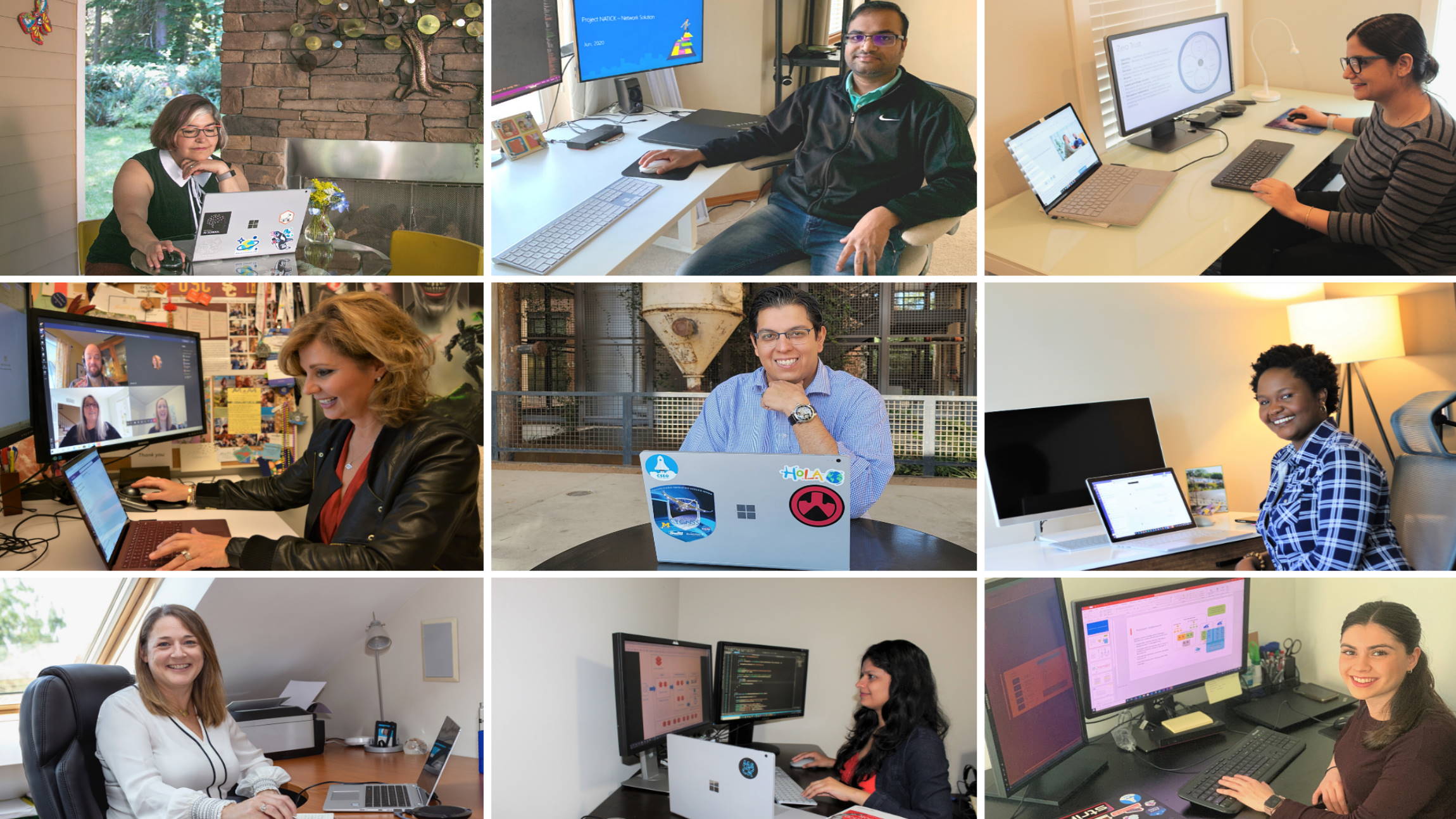This content has been archived, and while it was correct at time of publication, it may no longer be accurate or reflect the current situation at Microsoft.
When it became clear that employees would need to shift to working from home because of COVID-19, Microsoft pivoted quickly, taking steps to make sure the transition would be smooth for its 166,000 employees.
The team leading the charge was Microsoft Digital, the engineering organization at Microsoft that builds and manages the products, processes, and services that the company runs on.
The work that Microsoft Digital engineering teams did to make sure the company was ready for working from home included optimizing its network and VPN, ensuring its Zero Trust security system was ready for prime time, and making sure Microsoft Teams and other productivity tools were ready to help employees work from home with ease.
There are lots of tips and tricks that we use to help employees get more out of working on Teams. There’s a lot that they can do to stay effective when they need to work remotely.
-Sarah Lundy, a business program manager at Microsoft
Staying connected with Microsoft Teams
The team that deploys Microsoft Teams internally at Microsoft knew the platform would get a surge of usage once everyone started working from home.
The goal was to make sure employees didn’t feel like they were losing anything when they moved away from working in their offices, something MS Digital did with a very proactive approach to communicating all the things they could do with Microsoft Teams.
“There are lots of trips and tricks that we use to help employees get more out of working on Teams,” says Sarah Lundy, a business program manager at Microsoft Digital. “There’s a lot that they can do to stay effective when they need to work remotely.”
Keeping your network secure
If you’ve already moved most of your employees work to the cloud, your network will be fine if they all suddenly start working from home.
That’s what Microsoft learned when COVID-19 caused the company to shift to working remotely. Thanks to the Microsoft’s Zero Trust initiative, the company had already begun using a split tunneling approach to move employee workload from the company’s virtual private network (VPN) to the cloud.
“Adopting split tunneling has ensured that Microsoft employees can access core applications over the internet using Microsoft Azure and Microsoft Office 365,” says Steve Means, a senior service engineer at Microsoft Digital. “This takes pressure off the VPN and gives employees more bandwidth to do their job securely.”
Read this story to learn more about how Microsoft has managed its network and VPN during COVID.
Starting a new Microsoft job remotely
Like new hires everywhere, newly minted Microsoft employees are showing up for their first day of work without leaving home.

“Everything about this entire process has been virtual,” says Allison Koch, a customer success manager at Microsoft who lives in Pittsburgh, Pennsylvania. “I haven’t met anyone face-to-face—I met my new manager on a Teams call.”
Koch didn’t let that dampen her spirits, and neither are other employees.
Trimming Microsoft Azure usage
Usage of Microsoft Azure has increased during COVID-19, so much so that Microsoft has been working hard to reduce its internal usage of the cloud product to help ease demand.
In June 2020, Microsoft shared that Microsoft Teams shot up to more than 200 million daily users, 200 million daily meeting participants, and 4.1 billion daily meeting minutes, all of which contributed to a broader increase in cloud traffic.
“That was a huge jump,” says Binu Surendranath, global process owner in Finance Payout at Microsoft. “We could meet that demand by building more datacenters—which we are doing—but we also felt that we could free up more capacity to existing datacenters by optimizing our usage of Azure internally here at Microsoft.”
Making change remotely

This year’s Microsoft interns did their mission-critical work without ever setting foot on the company’s campus.
“I feel like I made a difference during my internship,” says Lily Zhang, a graduate student in Computer Science at the University of California, Berkeley. “I got to work on a project that was meaningful and made a difference for Microsoft.”
Learn more about how Microsoft deploys its own technology and services across the company by visiting the Microsoft IT Showcase website.





